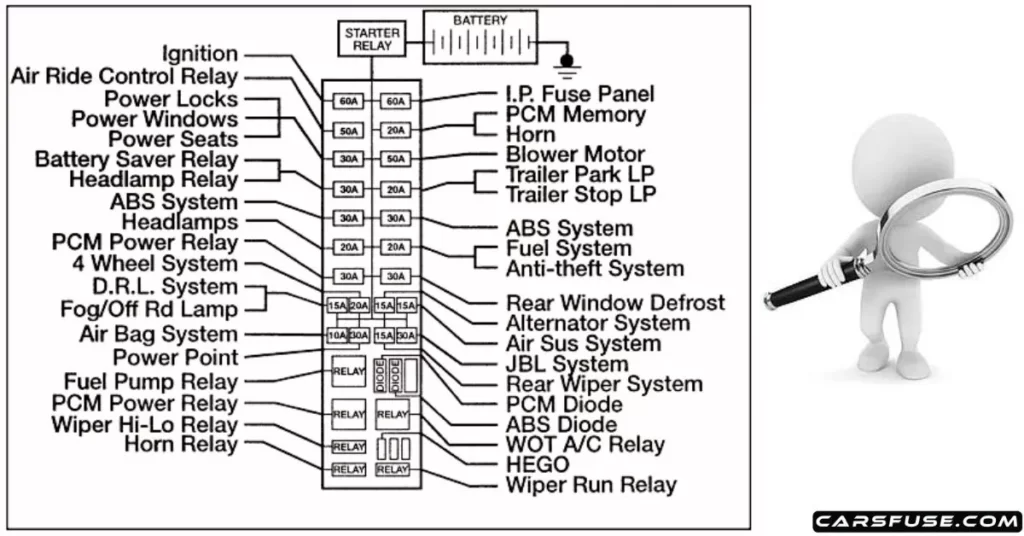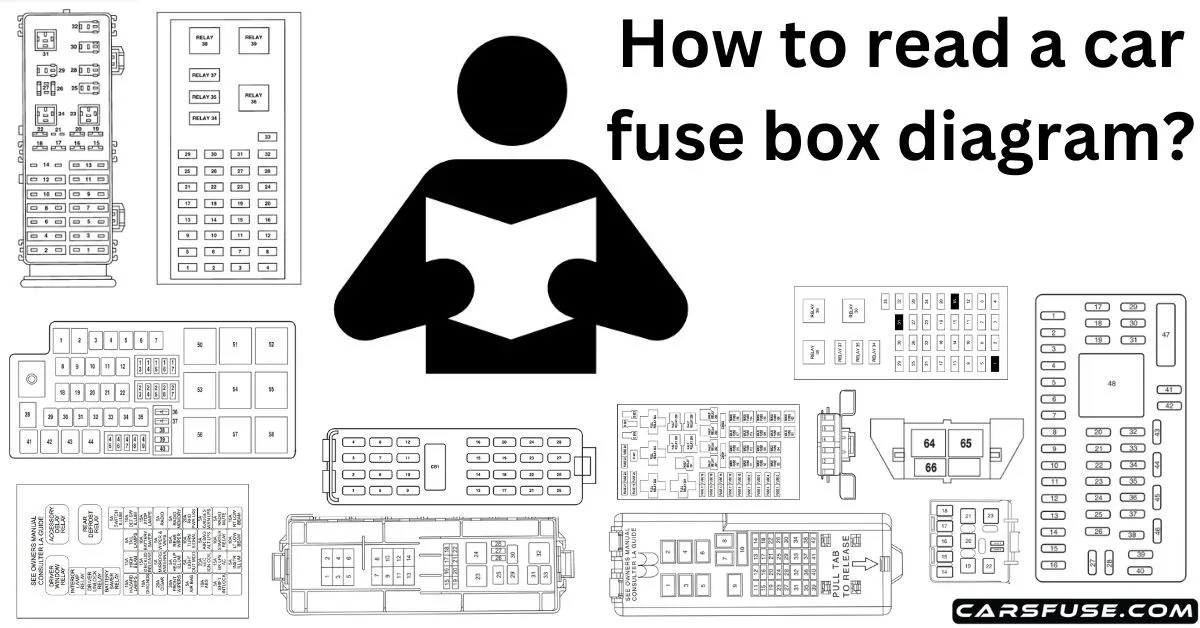The purpose of this article is to provide a comprehensive guide on how to read a car fuse box diagram. It aims to help readers gain the knowledge and skills needed to interpret these diagrams correctly. By understanding car fuse diagrams, readers can confidently locate fuses, determine their functions and ratings, and troubleshoot electrical problems in their vehicles.
The electrical system of a car is essential for its proper functioning, powering various components like lights, radio, air conditioning, and more. A car fuse diagram is a visual representation that shows the location and function of each fuse in the electrical system. Understanding these diagrams is crucial for vehicle owners and technicians as it enables them to identify and troubleshoot electrical issues effectively.
Table of Contents
What are the Steps to read a car Fuse Box Diagram?
By following these steps, you can effectively read and interpret a car fuse diagram. Understanding the layout, symbols, functions, and ratings depicted in the diagram will enable you to locate fuses, troubleshoot electrical issues, and ensure the proper functioning of your vehicle’s electrical system.

1. Collect essential information
Before diving into reading a car fuse diagram, it’s helpful to gather some important information. This includes knowing the make, model, and year of your vehicle, as well as having access to the car’s manual or a fuse diagram reference guide. These resources will provide specific information related to your vehicle’s fuse layout and symbols used in the diagram.
2. Locate the car fuse diagram
The car fuse diagram can usually be found in the owner’s manual or the fuse box cover. In some cases, the diagram may be located on the inside of the fuse box lid or on a separate card placed in the glove compartment. Locate the diagram and ensure it corresponds to your specific vehicle model and year.
3. Understand the layout and structure of the diagram
Also, carefully analyze the comprehensive layout and structure of the car fuse box diagram. Engage in the process of acquainting yourself with the assortment of symbols, labels, and organization of the fuses. Direct your focus towards any numerical or labeling systems employed to differentiate the fuses and their respective circuits.
4. Identify the fuses and their functions
Thoroughly analyze the diagram to distinguish the various fuses and their purposes. Each fuse is represented by a symbol or a combination of symbols that convey its function. For example, the electrical system may be depicted by a lightning bolt symbol, lights by a light bulb symbol, or audio-related fuses by a speaker symbol.
5. Interpret symbols and color codes
In addition to symbols, car fuse diagrams may also use color codes to represent different fuse ratings or types. It’s important to interpret these symbols and colors correctly to ensure the proper selection and replacement of fuses. Refer to the diagram’s legend or key to understand the specific meanings of the symbols and color codes used.
What do the numbers on the car fuse diagram mean?
Understanding how to read a car fuse diagram is an invaluable skill that grants you a deeper comprehension of your vehicle’s electrical system. It offers valuable insights into the interconnections and protective measures employed for various electrical components. Each fuse is assigned a specific location, usually indicated by a number or a combination of letters and numbers. By immersing yourself in the details of the diagram, you can develop a comprehensive understanding of the system’s overarching structure, including the distinct circuits and their corresponding fuses.

Identifying fuse locations and ratings
Car fuse diagrams help you locate the specific fuses for different electrical components in your vehicle The diagram shows the fuse box or panel layout, making it easier for you to find the exact fuse associated with a particular system or device. Additionally, the diagram provides information on fuse ratings, which indicate the amount of current the fuse can handle. If a particular electrical component or system is not functioning, refer to the diagram to identify the corresponding fuse. By understanding these ratings, you can ensure that the correct fuse is used and avoid potential electrical problems.
Troubleshooting electrical issues
Electrical problems can occur in a car due to various reasons, such as a blown fuse or a malfunctioning component. Car fuse diagrams are valuable tools for troubleshooting such issues. By referring to the diagram, you can quickly identify the fuse related to the problematic circuit. This allows you to check if the fuse is intact or blown. If the fuse is blown, you can then investigate the underlying cause, such as a short circuit or an overloaded circuit. With the information provided in the diagram, you can systematically diagnose and resolve electrical problems, saving time and effort.
For more information on troubleshooting car electrical issues, explore more queries related to the car fuses which provides in-depth information on common causes of fuse failures and offers effective solutions. Enhance your understanding of car electrical systems and address fuse-related challenges with confidence. Please do check through the link: Can I replace a car fuse by myself?
Conclusion
In conclusion, understanding how to read a car fuse box diagram is crucial for vehicle owners and technicians alike. These diagrams provide valuable information about the electrical system, fuse locations, ratings, and functions. Reading car fuse diagrams may initially seem complex, but with practice, you can gain confidence in interpreting them. Take the time to review and understand the diagrams specific to your vehicle. As you encounter electrical issues or perform maintenance, refer to the diagrams and apply the knowledge you have acquired. With each interaction, you will become more proficient in reading and utilizing car fuse diagrams.
Keep in mind that if you come across complicated or recurring electrical issues, it is highly recommended to seek help from a skilled mechanic or auto electrician who can offer expert advice and assistance.
Tom Smith is a passionate car mechanic and automotive enthusiast, specializing in the intricate world of car fuse boxes. With years of hands-on experience under the hood, he has earned a reputation as a reliable expert in his field. As the founder and content creator of the popular blog website 'carsfuse.com,' Tom has dedicated himself to sharing his extensive knowledge of car fuse boxes and electrical systems with the world.

